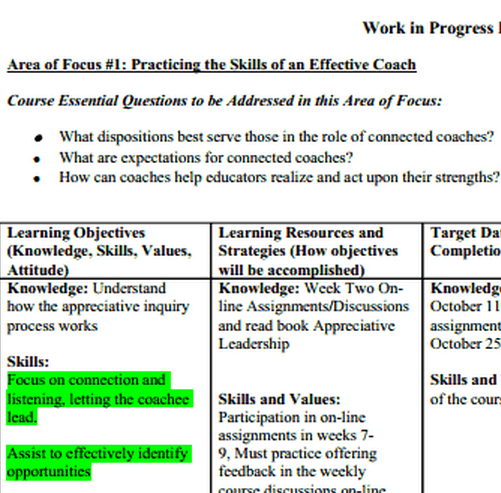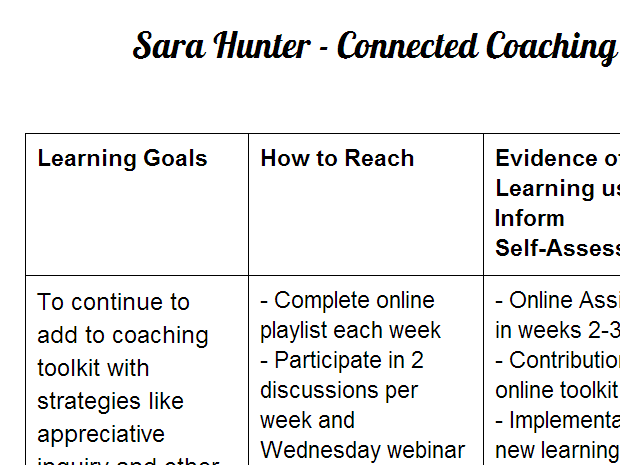Last night's dinner-- an aspargus pasta-- was especially good! The flavor and the texture of each of the ingredients -- asparagus, onions, balsamic vinegar, Asiago cheese and whole grain penne -- coaxed the greatest possible flavor from them to create a memorable experience. It's a recipe that has evolved over the years; it's the tweaking as I sought just the right balsamic vinegar, the perfect time to add the cheese, the best whole grain pasta. While I cleaned up the kitchen and reflected on the meal, the similarities to the Connected Coaching eCourse that I design and facilitate stood out for me.
From it's inception, the "ingredients" of the course have remained constant and they continue to provide the firm foundation for the course -- the strength based appreciative inquiry framework, the trustbuilding that grounds coaching in online spaces, the taking of time for reflections, the intentional building of relationships and the focus on growing a community of learners.
And yet like the asparagus pasta, the course has evolved. There are more diverse and purposeful opportunities for reflection enhancing the potential for deepened understandings.
A much more significant tweak followed the search for the perfect flavor for self governed learning -- the current learning pledge expectation, far more intense and unique, and based on ideas from Heutagogy (briefly illustrated below) has set the stage for organic, messy, authentic learning. With the diverse group of learners that collaborate in the course, there is the increased likelihood for learning journeys characterized by detours, side trips and loop backs under the umbrella of Connected Coaching.
| TRADITIONAL CLASSROOM | HEUTALOGICAL LEARNING ENVIRONMENT | |
| LEARNER ROLE | Share information | Learner driven, self directed, self governed |
| TEACHER ROLE | Presents information | Provides resources |
| CONTENT | Basic to higher order skill based | Authentic, meaningful, relevant |
| SOCIAL CHARACTERISTICS | Independent learning | Social and collaborative learning |
| ASSESSMENT | Tests, quizzes | Self-assessment, reflection |
Dawn's table format best met her needs as she identified 3 areas of focus and essential questions from the course that would guide her learning.
Sara's 5 goals set a path for her learning beyond the formal eCourse learning time together.
Kathryn added images to communicate more clearly her pledge to learning.
While Susan mapped out her learning through the lens of "know, do, be" and thoughtfully included assessment of, for and as learning.
Fiona also approached her learning pledge through the lens of "know,do, be"; her's is one of the most dynamic pledges in that she has linked to her reflections and added thoughts as she learned.
Finally, Jennifer's narration addressed 5 questions
With a simple request and no prescribed template-- an open recipe screaming for learners to tweak their own authentic path for learning-- the pledges, posted publicly in the course space, are rich with creativity, rich with expertise, rich with passion. Learning pledges, one critical ingredient that contributes to the learner centered inquiry environment for learning in the Connected Coaching eCourse.
I hope you will accept this cordial invitation to join the upcoming session and travel your Connected Coaching learning journey with only the best of ingredients.






